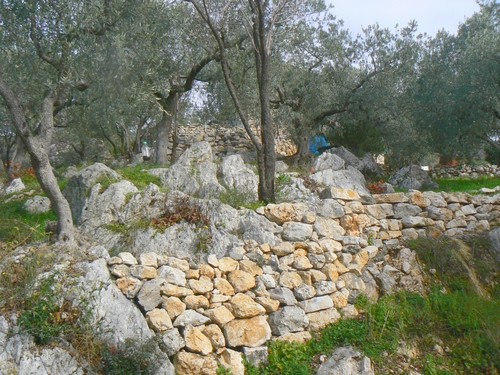Nerola, in the Province of Rome, is a village whose magnificent medieval castle, which stands intact with its towers and crenellations, testifying to the past splendor of the Orsini family, dominates the Corese stream valley,
which for millennia has hosted the salt route between Tirreno and Adriatico seas, one of the most ancient routes in Italy which, starting from the Sabini era, before Rome and until today, has maintained the name of "Via Salaria".We are talking about a land that saw the birth of the Italic civilization and that, given the extraordinarily mild climate and the rough and rocky cacareous soil nature, has hosted, since the dawn, the cultivation of the Mediterranean plant par excellence: the olive tree, forcing the farmers of any era to fight with the difficult and stony nature of this land and with highly steep slopes. We can therefore see the terracing works and the "lunettes" made with dry stone walls deriving directly from the ground peeling, an essential operation to give olive trees roots a sufficient layer of fertile soil and to work on flat or less steep surfaces, able to retain the soil and its moisture as well. But those farmers of the past who, completely holding on the land to survive, had to get their whole daily living, in addition to their works of genius, have left us a crops diversity richness. Among the olive trees, fruit trees of a thousand varieties, vineyards, vegetable gardens, wild shrub patches used for edible berries and woods for firewood and charcoal, the features of what we now call traditional promiscuous agriculture, which for millennia has dominated the hilly landscape and which today has almost disappeared due to the abandonment of marginal land and to farming modernization and specialization. In Nerola, however, the clock seems to have gone slower and biodiversity, the most extraordinary wealth of past farmers , seems to have survived monocultures bursting.
DOES THIS PLACE INSPIRE YOU?

















